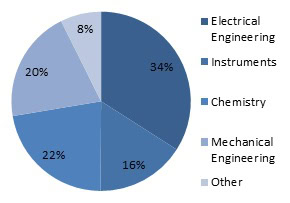Intellectual Property Rights Shape the Future
Intellectual Property Rights (IPR) are vital to the global economy. IPR make it possible for creators to have exclusive rights to their tangible and intangible inventions, and for companies to brand their products, thus differentiating them from similar goods. Strong IPR protections also incentivize the capital-intensive research responsible for the innovations that allow human beings to live longer, healthier and happier lives. Today – at the precipice of the next industrial age hallmarked by automation, deep-data analytics and Internet-connected devices – is a great time to celebrate the role of IPR in shaping the future!
Illustrative of how important IP-intensive sectors are to the U.S. economy, the latest Global Intellectual Property Center IP index reports that IP-intensive industries employ 40 million Americans and pay wages that average 30 percent more than other industries. These workers produce 72.5 percent more than the typical American worker, and their products account for 74 percent of all exports. The latest filing statistics from the United Nations’ World Intellectual Property Organization (WIPO) on patents and trademarks make clear how international competition in IP drives innovation.
2015 PCT Applicants by Field

2015 Top 10 PCT Patent Applicants
- Huawei Technologies (China)
- Qualcomm (USA)
- ZTE (China)
- Samsung (Rep. of Korea)
- Mitsubishi (Japan)
- Ericsson (Sweden)
- LG Electronics (Rep. of Korea)
- Sony Corp (Japan)
- Philips (Netherlands)
- Hewlett-Packard (USA)
Table 1: World Intellectual Property Organization 2016 Statistical Filings
The fields that filed the most patents in 2015 were electrical machinery and digital communication in the electrical engineering field. These fields filed fewer applications than the year before, but continue to occupy the largest portion of the total share of applications – 7.3 and 8 percent respectively. However, Asia continues to grow its share of world inventions. China, the Republic of Korea and Japan filed 42 percent of PCT applications in 2015 with China alone increasing its applications by 9 percent.
Universities contribute significantly to the pool of patent applications. Thanks to the 1980 Bayh-Dole Act that allows U.S. universities to own and license inventions created with federal research funding, U.S. universities patent more inventions than their global peers and account for 50 percent of all educational institution applications in the world.
2015 Top Ten PCT Patent Applications from Educational Institutions
| University of California (USA) | 361 | University of Michigan (USA) | 116 |
| Massachusetts Institute of Technology (USA) | 213 | University of Florida (USA) | 108 |
| Johns Hopkins University (USA) | 170 | Tsinghua University (China) | 102 |
| University of Texas (USA) | 163 | University of Tokyo (Japan) | 101 |
| Harvard University (USA) | 158 | Leland Stanford Junior University (USA) | 99 |
Table 2: World Intellectual Property Organization 2016 Statistical Filings
Without strong protections for IPR, creators lack the incentive to invest in new innovations, and corporations are discouraged from expanding into new markets. It is in everyone’s best interest to protect the IPR that spur the innovation economy and enhance quality of life!

